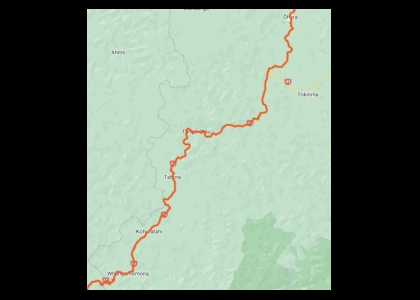
17 Feb 2023
Day 2 - New Plymouth to Whangamomona

This is a day I had been dreading - 95km, with climbs at Purangi, Matau, Pohokura and Whangamomona.
Fortunately, when we left New Plymouth, we gave Deb our camping gear as we had accommodation and food booked each day through to Waikaremoana, where Deb would meet us with a cooked dinner at the DoC campsite!
We started with a gentle ride along the coastal walkway. New Plymouth is an incredibly attractive city - great civic art, parks and walkways - cyclists are well catered for.
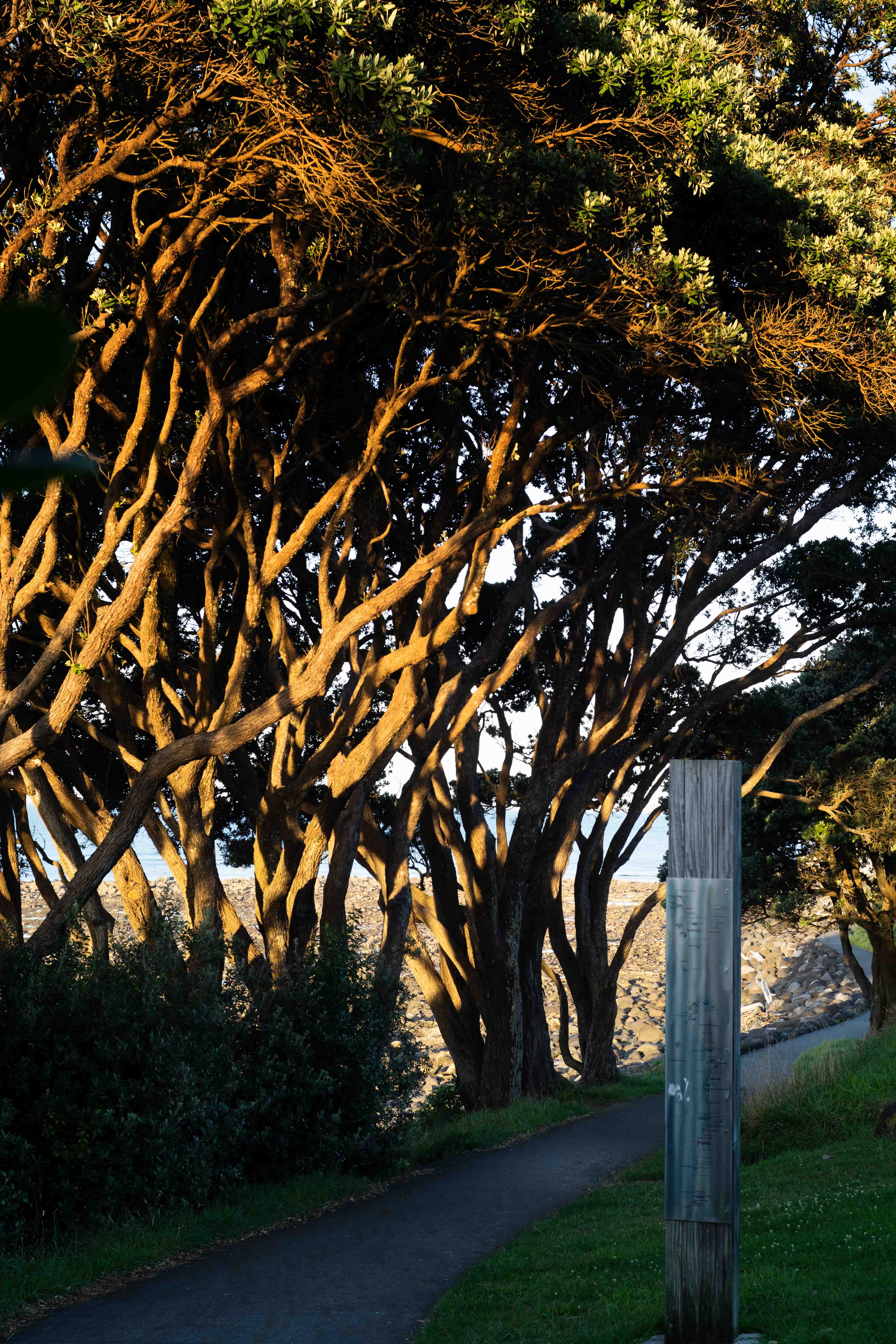
We wound our way along the waterfront, turning on rear lamps, testing packing and balance - this is the first time we've ridden with our cycling packs.
My bike, a lightweight bike without battery or suspension, was designed for riding on gravel. It weighs about 8kg unladen, and has a frame pack (sitting in the triangle below the top tube), a "cockpit" on the top tube, a saddle pack (sticking out from under the saddle), and a backpack with 2 litre water bladder, rain jacket and lunch.
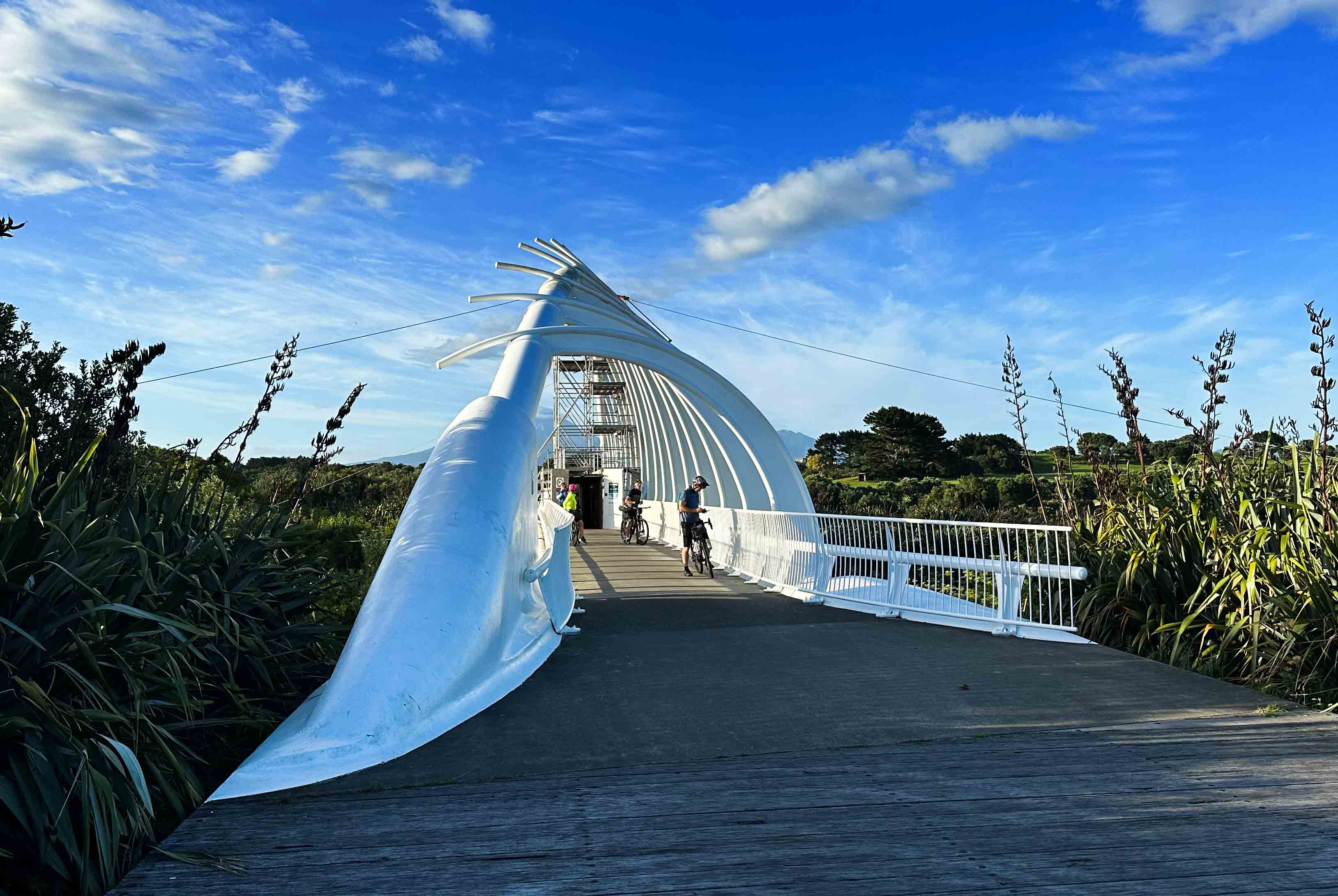
After winding our way out of New Plymouth, we started climbing into the hills. Mostly short, steepish climbs and descents to Pukeho Domain, where we stop for lunch.
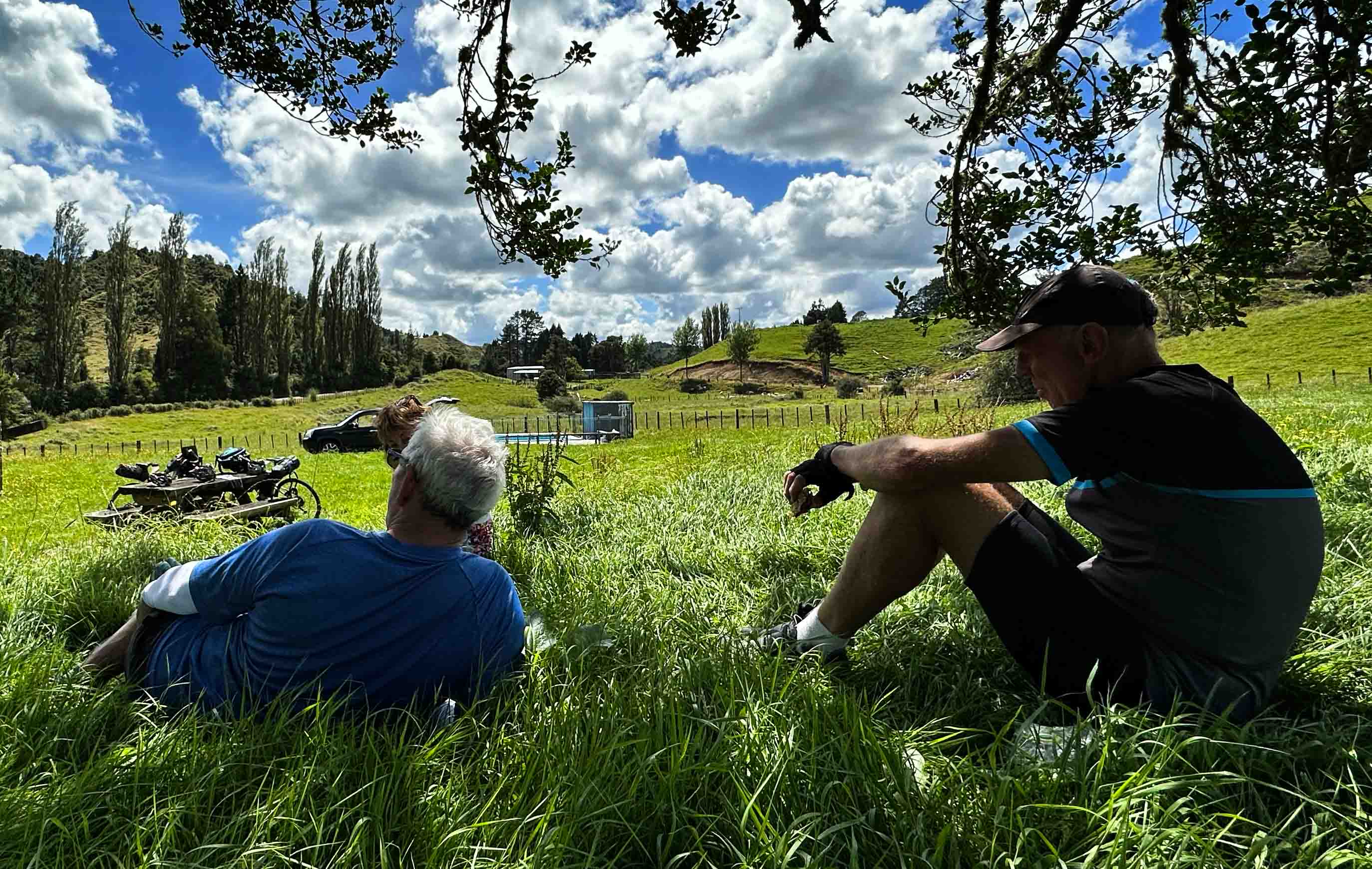
Nutrition on cycling trips has been a problem for me. In addition to water and muesli bars, I carry water bottles with electrolytes. The idea is to sip the electrolytes, and nibble on the bars during the ride to avoid "bonking" - running out of energy, similar to marathon runners "hitting the wall".
I couldn't face much of my lunch, so I nibbled a muesli bar and sipped the electrolytes at every stop.
From Pukeho, we started to climb. I developed a strategy of dropping to my lowest gear (Granny) as I started the climb and to focus on each corner as a goal; as I felt I was starting to struggle, I'd stop, catch my breath and then cycle on again. The descents were phenomenal!
At the base of the Matau climb, we went onto gravel. This was lovely ascending through bush, spoiled by logging trucks coming the other way. Fortunately, we could hear them, giving us time to get well off the road. At Matau we filled up with water and contemplated the next stage.
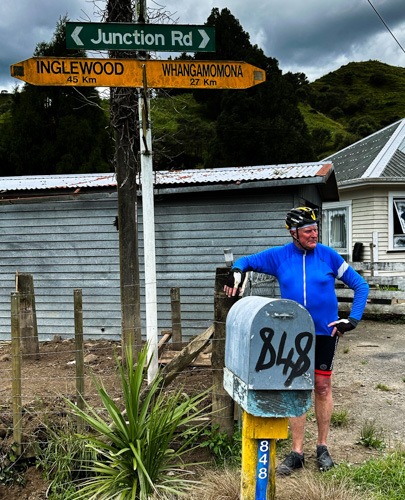
The climb to Pohokura Saddle was long and slow, picking a line in the gravel. Most of the time, the tyre tracks provided a smooth surface. I was using the widest tyres for my frame (40mm), set to a low pressure (approximately 30psi) to smooth the ride. At corners, the surface became corrugated, making climbing through the inner corner difficult. Most of the time, we were weaving our way across the full width of the road, looking for the easiest surface to ride.
At the top of the Pohokura Saddle, we joined the Forgotten World Highway, and a smooth sealed surface. Another fast descent, followed by a continuous climb to the top of the Whangamomona Saddle, and a chilling, high speed run into the Republic of Whangamomona.
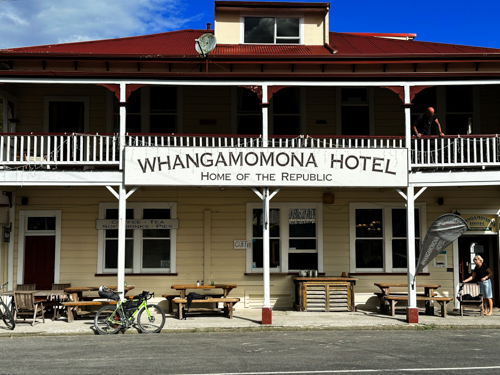
A long day, capped with a few beers, a steak and early bed.
95km, 1,764m, max speed 53.3kph, average 16kph


